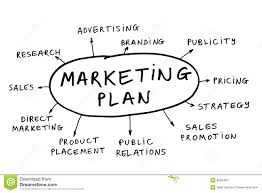 A marketing plan clarifies the key marketing elements of a business and maps out directions, objectives and activities for the business and its employees.
A marketing plan clarifies the key marketing elements of a business and maps out directions, objectives and activities for the business and its employees.
The marketing plan draws on the broader perspectives outlined in a firm’s business plan. The business plan states how a company will take a product idea and transform that into a commercially viable proposition.
The marketing plan focuses on issues related to the four Ps: product, price, promotion and place.
Addressing these issues and putting them into written form can be useful for a business owner, in that it forces them to analyze their business. It can be good for employees, as the marketing plan can provide them with essential orientation and be a source of motivation.
Product
The marketing plan identifies the ‘hook’ for a product or service. Who will buy it and why? How is it better than its competitors?
Price
What pricing strategy will the company follow for this product? Is the plan to sell large volumes so that economies of scale can keep the price low? Or will it be marketed to a niche at a high price?
Promotion
What is the advertising strategy? How will the product be packaged? What will its marketplace positioning be?
Place
How will the product be distributed? Will it be sold by retail stores or by direct marketing?
The business should also be assessed with SWOT analysis – in terms of Strengths, Weaknesses, Opportunities and Threats.
SWOT analysis evaluates a company’s competitors and identifies areas of opportunity that can be exploited and possible commercial threats. It analyzes a business and how it will fit into the marketplace.
Part of the analysis will focus on internal issues. For example, is a company hampered by a lack of worker training?
Other analysis will be external. For example, will a company’s location give it any distribution advantages?
The analysis should assess the cost and effectiveness of using a variety of distribution channels.
It should evaluate geographical issues. Would a product be best marketed locally or could it be a competitive export? How big a share of the market does the product need to win? At what point will projected sales volumes cover production costs?
How will competitors react to the product? Will they try to undercut its price? What kind of advertising would effectively distinguish a product against its competitors?
A marketing strategy forms part of a marketing plan. It explains how a product will be distinguished from its competitors. A sales plan should then give details of promotional events and campaigns that will deliver the strategy.
This kind of analysis can’t be done on the back of an envelope. Small business owners could usefully seek advice on all these issues, although they need to make final decisions, as they have the best understanding of their product and business.
Useful websites include:
Copyright 2001, RAN ONE Inc. All rights reserved. Reprinted with permission from www.ranone.com.

 Chris’ combination of academic credentials, career experience and temperament ideally suit his calling as a business development advisor. Clients say he has a mind for business and a heart for service.
Chris’ combination of academic credentials, career experience and temperament ideally suit his calling as a business development advisor. Clients say he has a mind for business and a heart for service.